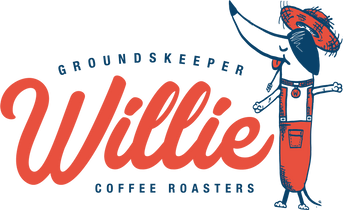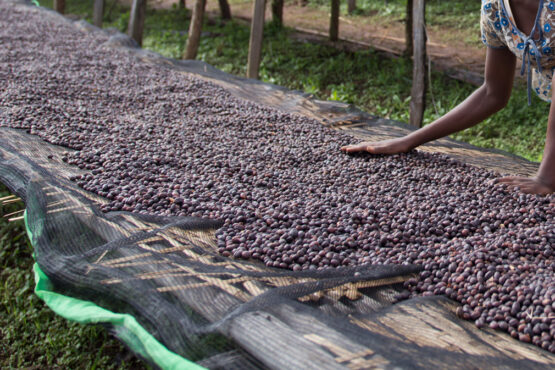New Single - Ethiopia Worka Chelchele
BAM, we've got another Eth in the house!
ABOUT THE REGION
This newbie was processed in the ‘kebele’ (town or village) of Worka, in the ‘woreda’ (administrative district) of Chelchele, in Ethiopia’s Gedeo Zone. The coffee was processed at Worka Washing Station, which is owned by Tracon Trading, a family-owned exporting company who help manage quality control at the washing station and prepare the resulting parchment for export at an impressive dry milling facility in Addis Ababa. Worka produces both washed and natural coffees.
The Gedeo Zone is located in southwest Ethiopia, in the Southern Nations, Nationalities, and People’s Region political region, and is named after the Gedeo people. Traditionally, coffee from Gedeo has been classified both as “Sidama” and “Yirgacheffe,” with the latter being its most famous coffee-growing woreda, and one of the country’s three trademarked regions. With average year round temperatures between 15-18oC and healthy annual rainfalls, Gedeo is well-suited to coffee-growing. Most coffee grown here is part of a family’s ‘coffee garden,’ and is farmed alongside other food crops in environments nearly free of fertilisers and pesticides. These lots grow in iron-rich, acidic soils and receive shade from native trees such as Cordia Africana, Acacia, and Ensete trees.
Gedeo is bordered on all sides by the Oromia political region, except for its north, where it is bordered by the Sidama political region. It includes well-known coffee-growing woredas such as Yirgacheffe, Kochere and Gedeb.
Coffees that are grown and processed in Sidama showcase an extremely diverse range of flavour profiles, and are noted for their intensely fruit-forward, tea-like, floral and complex character that is sought after worldwide. It is widely accepted that the coffee species, Arabica, originated in the lush forests of southern forests of Ethiopia and hence growing conditions in this area are perfectly suited for producing exquisite coffees.

ABOUT THE FARMERS
During harvest, freshly picked coffee cherry is delivered daily by some 845 local coffee growers, before being processed under the watchful eye of washing station manager, Yesuf Ali. The majority of the families who contributed to this lot farm organically on tiny plots of land, averaging just 2.8 hectares in size. Coffee is their main cash crop and grows alongside food crops of corn, grain and bananas, under the shade of native Birbira, Wanza, and Acacia trees.
The average elevation of the farms in this region is very high – around 1,900–2,200m above sea level – and this, combined region’s cool temperatures, is ideal for the slow ripening of coffee cherries, leading to denser beans and a sweeter, more complex cup profile.
ABOUT THE CHERRY
Coffee nerds, read on!
This coffee is a mix of native or “landrace” varieties and JARC varieties.
For many years, most Ethiopian coffees have been described as being a mix of cultivated and wild varieties, referred to as “heirloom varieties.” This is a term that is all-encompassing and used by many actors in the coffee industry to generally categorise Ethiopian coffee varieties that are from native forest origins. Whilst this describes many of the varieties found in Ethiopia, it is also a bit simplistic and does not acknowledge the varieties that are already locally recognised and cultivated, or those that have been specifically developed and widely distributed by the Jimma Agricultural Research Centre (JARC).
Sidama is home to many landrace varieties that were originally selected from the forest and have been propagated successfully for decades. There are five popular varieties that are named after indigenous trees in the area— Bedessa, Kudhumi, Mique, Sawe and Wolisho. There is little documentation on the history of these varieties, and it is hard to know if they represent a single plant or a wider group of varieties; however, it is widely accepted that they play a major role in the quality and floral flavour profile of the coffee from this region. JARC varieties were developed using “mother trees” from Ethiopia’s coffee forests, and are now grown for disease and pest resistance, as well as exceptional cup profile, and are released by number. For example, 74110, 74112 and 74116 are all widely propagated in the Sidama growing region.

ABOUT THE PROCESSING
This coffee was processed using the natural method; a complex process requiring a high level of attention to detail in order to be done well. Ethiopian coffee has been processed this way by generations of farmers who have mastered the art of the natural method through centuries of tradition and experience.
Tracon Trading ensures that a great deal of care is taken in the processing and drying of their naturals, and they aim for all of their exportable coffee to be specialty quality grade. This coffee is classified as Grade 1, indicating that a lot of effort has been put into the selection, grading and drying to ensure the very highest quality coffee is produced.
Each day, carefully hand-picked coffee cherries are delivered to the wet mill and are meticulously hand-sorted prior to processing to remove unripe, overripe, or damaged fruit, in order to enhance the quality and sweetness of the cup.
The coffee is then graded by weight and spread evenly on raised African beds (screens) to dry in the sun. Initially, it is laid very thinly and turned regularly to ensure consistent drying and prevent over-fermentation. This is done very carefully to avoid damage to the fruit.
After a few days, when the coffee has reached 25% humidity—this is called the “raisin stage”—the layers of coffee are gradually increased. Careful attention and control during this drying phase ensures the coffee is stable and that a clean and balanced cup profile is achieved. The coffee is turned constantly whilst drying to ensure that it dries evenly and consistently. At midday, the coffee is covered to protect it from full sun. It is also covered overnight to prevent damage from morning dew.
Once the coffee reaches the optimum moisture level (usually after 15–18 days), it is hulled at Tracon Trading’s facility in Addis Ababa, and rested in bags in parchment until it is ready for export.
We hope you enjoy this Eth as much as we are. We're getting flavours of stone fruit, boysenberry and a creamy body and finish. We've only sourced a small amount, so don't miss out!


 Initially, the coffee is laid out thinly and turned regularly to ensure consistent drying and prevent over-fermentation.
Initially, the coffee is laid out thinly and turned regularly to ensure consistent drying and prevent over-fermentation.